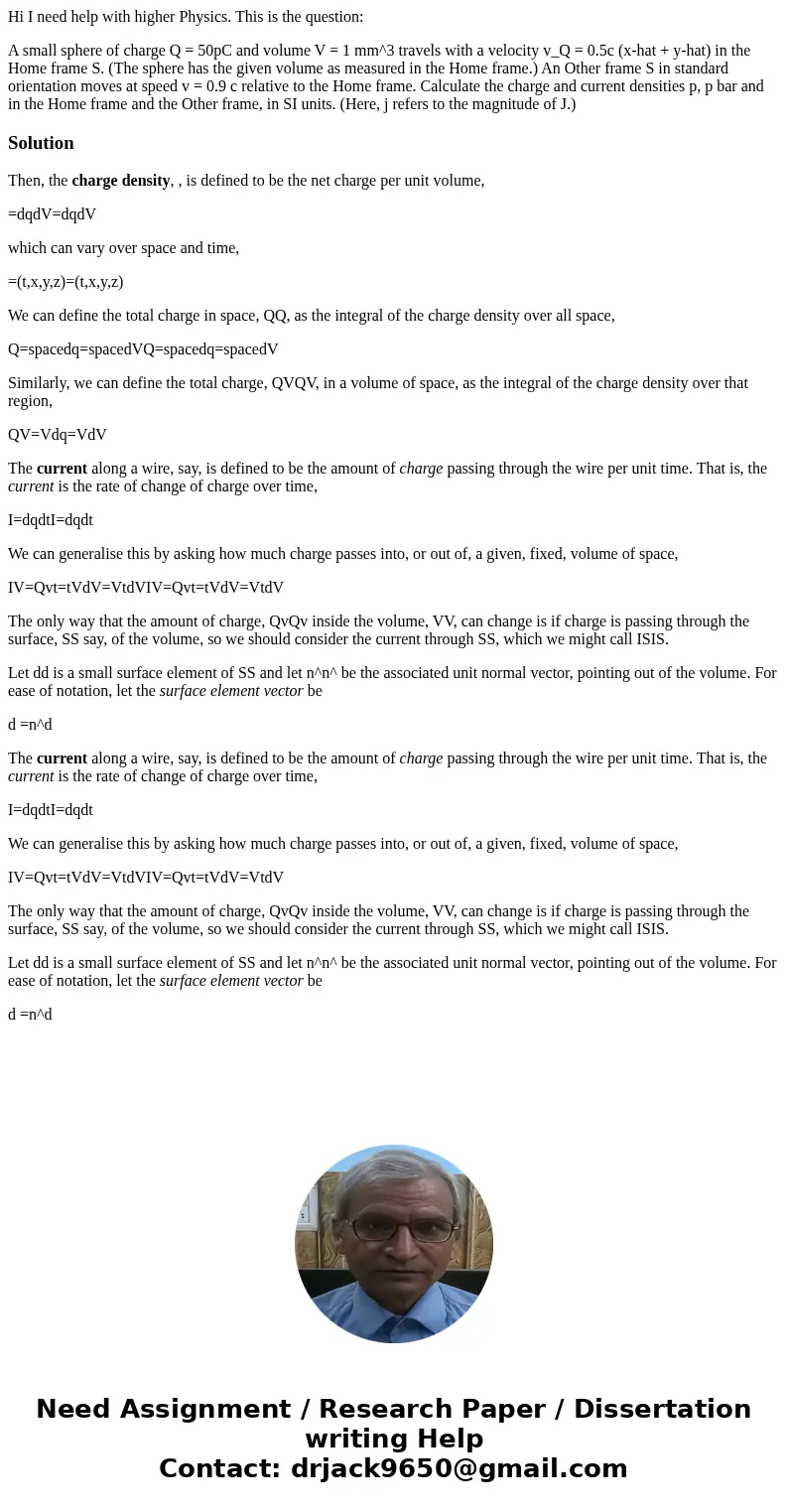Hi I need help with higher Physics This is the question A sm
Hi I need help with higher Physics. This is the question:
A small sphere of charge Q = 50pC and volume V = 1 mm^3 travels with a velocity v_Q = 0.5c (x-hat + y-hat) in the Home frame S. (The sphere has the given volume as measured in the Home frame.) An Other frame S in standard orientation moves at speed v = 0.9 c relative to the Home frame. Calculate the charge and current densities p, p bar and in the Home frame and the Other frame, in SI units. (Here, j refers to the magnitude of J.)Solution
Then, the charge density, , is defined to be the net charge per unit volume,
=dqdV=dqdV
which can vary over space and time,
=(t,x,y,z)=(t,x,y,z)
We can define the total charge in space, QQ, as the integral of the charge density over all space,
Q=spacedq=spacedVQ=spacedq=spacedV
Similarly, we can define the total charge, QVQV, in a volume of space, as the integral of the charge density over that region,
QV=Vdq=VdV
The current along a wire, say, is defined to be the amount of charge passing through the wire per unit time. That is, the current is the rate of change of charge over time,
I=dqdtI=dqdt
We can generalise this by asking how much charge passes into, or out of, a given, fixed, volume of space,
IV=Qvt=tVdV=VtdVIV=Qvt=tVdV=VtdV
The only way that the amount of charge, QvQv inside the volume, VV, can change is if charge is passing through the surface, SS say, of the volume, so we should consider the current through SS, which we might call ISIS.
Let dd is a small surface element of SS and let n^n^ be the associated unit normal vector, pointing out of the volume. For ease of notation, let the surface element vector be
d =n^d
The current along a wire, say, is defined to be the amount of charge passing through the wire per unit time. That is, the current is the rate of change of charge over time,
I=dqdtI=dqdt
We can generalise this by asking how much charge passes into, or out of, a given, fixed, volume of space,
IV=Qvt=tVdV=VtdVIV=Qvt=tVdV=VtdV
The only way that the amount of charge, QvQv inside the volume, VV, can change is if charge is passing through the surface, SS say, of the volume, so we should consider the current through SS, which we might call ISIS.
Let dd is a small surface element of SS and let n^n^ be the associated unit normal vector, pointing out of the volume. For ease of notation, let the surface element vector be
d =n^d

 Homework Sourse
Homework Sourse